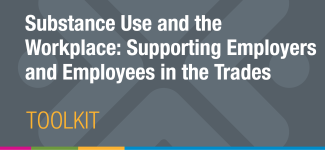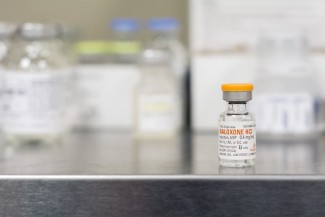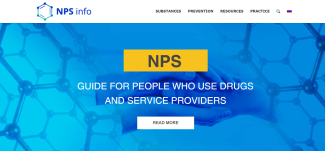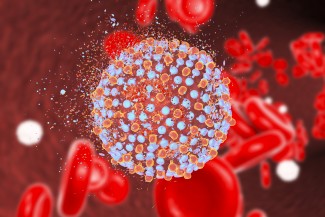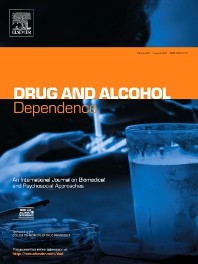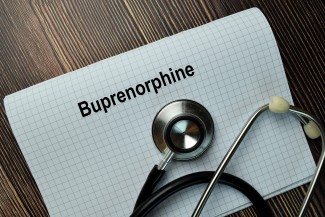Search
Addiction treatment in India: Legal, ethical and professional concerns reported in the media
Health and social responses to drug problems: a European guide 2021
The Health and social responses to drug problems: a European guide 2021 was developed to support practitioners and policymakers in tackling the negative consequences of drug use.
The guide is composed of four sets of miniguides that look...
Impact of an adult family member’s problematic substance use on family life
Problematic substance use can be a significant cause of stress for family members of the person using substances. This review, published in the journal Drug: Education, Prevention and Policy, examines current research in order to explore...
Are former heavy drinkers in the UK less likely to identify as being in recovery compared to those in the USA? A pilot test
The Alcoholics Anonymous (AA) movement created the term "in recovery" to express the continuing requirement for vigilance in order to sustain sobriety (which includes abstinence from alcohol intake) and avoid a return to dangerous drinking...
Cannabis tourist destinations: Risk for vulnerable travellers with pre-existing mental disorders
COVID-19 Response: Mental Health and Psychosocial Support for Community Health Workers
This online course provides an overview of how community health workers (CHWs) can support their communities by providing appropriate mental health and psychosocial support during the COVID-19 pandemic.
In this course you will learn how...
Social Determinants & Substance Use: A Perspective Beyond the Policy 'Silo' Pragmatics
Social Determinants & Substance Use: A Perspective Beyond the Policy 'Silo' Pragmatics - This paper (synoptic version, peer reviewed and published in Journal of Global Drug Policy & Practice) is a review of and research into the social...
Alcohol and self-harm: A qualitative study
Executive Summary
This qualitative study was commissioned by Alcohol Change UK in Wales to explore how and why alcohol and self-harm are related, and how alcohol, self-harm, and related services, are experienced and understood. Eleven...
Identifying content-based engagement patterns in a smoking cessation website and associations with user characteristics and cessation outcomes: a sequence and cluster analysis
Tobacco smoking is the greatest cause of sickness and early death worldwide, with 8 million people dying each year from a smoking-related condition. The use of pharmaceutical or behavioural assistance improves smokers' chances of quitting...
Substance use and the workplace: Supporting employers and employees in the trades
The Canadian Centre on Substance Use and Addiction partnered with Health Canada to produce Substance Use and the Workplace: Supporting Employers and Employees in the Trades.
This collection of resources contains links from more than 30...
Take-home naloxone
Opioid overdose deaths can be prevented through timely administration of naloxone, a potent opioid antagonist drug that rapidly reverses the effects of opioid analgesics by binding to the opioid receptors in the central nervous system.
Bec...
Website on new psychoactive substances NPS-Info.org
The web resource is divided into five sections: "Substances", "Prevention", "Resources", "Practice" and "Get Help". The Resources section contains videos on HIV prevention among people who use stimulants/NPS. This section also includes...
The impact of COVID-19 on drug use and harm reduction programming in the Middle East and North Africa (MENA) region: a regional consultation of stakeholders and people who use drugs
COVID-19 (SARS-CoV-2) was classified a pandemic on March 11, 2020, with early reports of the disease occurring in the Middle East and North African (MENA) area. On January 2021, the World Health Organization Eastern Mediterranean Regional...
Increase access to hepatitis C (HCV) testing and care in drug services- a toolkit
People who inject drugs (PWID) are a key population for the elimination of hepatitis C in Europe, and increasing their access to HCV testing and care is a goal in European and national hepatitis C policies. Despite this, HCV testing remains...
Addressing long overdue social and structural determinants of the opioid overdose crisis: Drug and Alcohol Dependence Special Issue
This special issue addresses a rapidly growing area of research with a pressing public health need, the social structure of opioid use.
Specifically, this issue compiles original articles that apply theoretical and empirical frameworks to...
Gender disparities in opioid treatment progress in methadone versus counselling
The high dropout rate (75%) in opioid use disorder (OUD) treatment among women and racial/ethnic minorities in the United States necessitates a better knowledge of the factors that contribute to treatment success. While therapy and...
High-dose buprenorphine induction in the emergency department for treatment of opioid use disorder
In response to the rising efficacy of the illicit opioid drug supply and often observed delays in access to follow-up therapy, emergency departments (EDs) occasionally utilize a high-dose buprenorphine induction method for the treatment of...
Variation in brief treatment for substance use disorder: a qualitative investigation of four federally qualified health centres with SBIRT services
Brief treatment (BT) or regular outpatient alcohol use or substance use disorder (SUD) treatment is a key element of the Screening, Brief Intervention, and Referral to Treatment (SBIRT) model. It can be an effective, short-term, and low...
Share the Knowledge: ISSUP members can post in the Knowledge Share – Sign in or become a member


